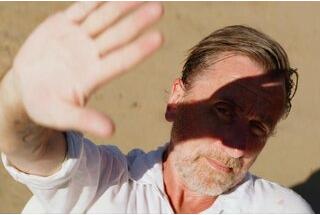Shooting seen from behind the scenes, a round table discussion organized with K 5600 Lighting and Transvideo
By François Reumont for the AFCThe discussion began on the theme of preparation. Dick Pope regretted the chronic lack of preparation that cinematographers are confronted with on all films, even large budget productions. The image team is asked to begin preparing only three weeks before shooting, and must almost always make do with a hurried 2-day long technical scouting trip, which is quite insufficient to be able to become familiar with the location and smooth out all of the lighting or equipment problems.
Helmut Prein adds that the pressure of the production manager often borders on the ridiculous, demanding a technical list practically as soon as the visit of each location is over. Most of the time, the gaffer and the director of photography are obliged to provide pre-made lists that try to cover the majority of filming situations they expect to come across on the script. This list is either too broad, or incomplete, and therefore satisfies no one in the end.
Regarding the choice of lenses, all of the speakers seemed to agree on the extreme importance of this decision, which has repercussions all the way down the line. John Bailie admits that he does intensive tests with each lens, and is even thinking of creating colorimetric digital timing profiles for each lens in order to harmonize the series in cases where mismatched lenses are used.
Regarding shooting itself, each speaker seemed to come across rather ludicrous situations, on small films and huge Hollywood productions alike. Matthew Libatique, for example, didn’t hesitate to recount the behind the scenes of filming of Iron Man, directed by John Favreau, where the director and the actors could spend hours agonizing over a small decision, while a team of over 500 people stood by patiently waiting…
Dick Pope explains how lucky he was to film with Mike Leigh, from that point of view. He is a director who imposes an iron discipline on his set. The initial rehearsal sets the storyboard, and is then followed by the technical set up, followed by a new series of rehearsals that are perfected in a religious silence, and then, at last, shooting takes place with actors who have been rehearsing for months before each scene. The director stays behind the camera, and the only video assist is placed far away and is only used to make technical verifications.
Another regret that is shared by all is the tendency to never turn off the camera ; the director lets it constantly record. This results in a recurrent lack of concentration on behalf of the team, who no longer knows when it needs to be paying attention. This is a very different atmosphere from when actual film stock was used, where everyone knew how important the moment was when the camera began recording. “The syndrome of ‘I don’t care, keep filming,’ has become so huge that at the end of the day you end up with hours and hours of dailies that have to be dealt with and sent to assembly…, logged…, synchronized…, total economic nonsense !” complains Matthew LIbatique.
Regarding image control tools, Matthew confesses to using the monitor now, sometimes for spot metering, or using some of its functions like the “false colour” images, or the histogram. As for Dick Pope, he says he no longer uses the colour temperature meter. Or sometimes from within the cell, “but just to hide behind it and pretend to be deep in thought about my lighting, and like that no one comes to bother me !” he explains, laughing.
(In the photo above, to the left of Benjamin B., the round table participants : Matthew Libatique, Dick Pope, Thomas English, Helmut Prein, Peter Marsden, and John Bailie - Photo R. Chevrin)
 En
En Fr
Fr





